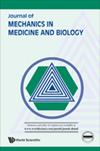ECG Signal Quantitative Analysis Based on Extremum Energy Decomposition Method
IF 0.6
4区 医学
Q4 BIOPHYSICS
引用次数: 0
Abstract
Quantitative analysis of electrocardiogram (ECG) signals plays a pivotal role in objectively and quantitatively assessing cardiac electrical activity. This paper presents an innovative approach for quantitative ECG signal analysis utilizing extremum energy decomposition (EED). The methodology encompasses multiple steps: acquisition of unknown ECG signal under specific time and sampling conditions, denoising of acquired ECG signals, and subsequent decomposition of denoised ECG signals into a set of extremum modal function components alongside a residual. The n extremum modal function components obtained effectively represent different frequency bands. By evaluating these n extremum modal function components, the presence and severity of abnormalities within the ECG signal can be determined. The results showcased the effectiveness of the method in accurately identifying abnormal ECG signals, and the technique demonstrated robustness against noise interference, enhancing its practical utility in clinical and diagnostic settings. This research contributes to the field of ECG analysis by offering a quantitative toolset that enhances the objectivity and accuracy of abnormality assessment in cardiac electrical activity.基于极值能量分解方法的心电信号定量分析
心电信号的定量分析在客观、定量地评价心电活动中起着至关重要的作用。本文提出了一种利用极值能量分解(EED)进行心电信号定量分析的创新方法。该方法包括多个步骤:在特定的时间和采样条件下采集未知的心电信号,对采集到的心电信号进行去噪,然后将去噪的心电信号分解成一组极值模态函数分量和残差。得到的n个极值模态函数分量有效地代表了不同的频段。通过评估这n个极值模态函数分量,可以确定ECG信号中异常的存在和严重程度。结果表明,该方法在准确识别异常心电信号方面是有效的,并且该技术对噪声干扰具有鲁棒性,增强了其在临床和诊断环境中的实用性。本研究通过提供一套定量工具,提高了心电活动异常评估的客观性和准确性,为心电图分析领域做出了贡献。
本文章由计算机程序翻译,如有差异,请以英文原文为准。
求助全文
约1分钟内获得全文
求助全文
来源期刊

Journal of Mechanics in Medicine and Biology
工程技术-工程:生物医学
CiteScore
1.20
自引率
12.50%
发文量
144
审稿时长
2.3 months
期刊介绍:
This journal has as its objective the publication and dissemination of original research (even for "revolutionary concepts that contrast with existing theories" & "hypothesis") in all fields of engineering-mechanics that includes mechanisms, processes, bio-sensors and bio-devices in medicine, biology and healthcare. The journal publishes original papers in English which contribute to an understanding of biomedical engineering and science at a nano- to macro-scale or an improvement of the methods and techniques of medical, biological and clinical treatment by the application of advanced high technology.
Journal''s Research Scopes/Topics Covered (but not limited to):
Artificial Organs, Biomechanics of Organs.
Biofluid Mechanics, Biorheology, Blood Flow Measurement Techniques, Microcirculation, Hemodynamics.
Bioheat Transfer and Mass Transport, Nano Heat Transfer.
Biomaterials.
Biomechanics & Modeling of Cell and Molecular.
Biomedical Instrumentation and BioSensors that implicate ''human mechanics'' in details.
Biomedical Signal Processing Techniques that implicate ''human mechanics'' in details.
Bio-Microelectromechanical Systems, Microfluidics.
Bio-Nanotechnology and Clinical Application.
Bird and Insect Aerodynamics.
Cardiovascular/Cardiac mechanics.
Cardiovascular Systems Physiology/Engineering.
Cellular and Tissue Mechanics/Engineering.
Computational Biomechanics/Physiological Modelling, Systems Physiology.
Clinical Biomechanics.
Hearing Mechanics.
Human Movement and Animal Locomotion.
Implant Design and Mechanics.
Mathematical modeling.
Mechanobiology of Diseases.
Mechanics of Medical Robotics.
Muscle/Neuromuscular/Musculoskeletal Mechanics and Engineering.
Neural- & Neuro-Behavioral Engineering.
Orthopedic Biomechanics.
Reproductive and Urogynecological Mechanics.
Respiratory System Engineering...
 求助内容:
求助内容: 应助结果提醒方式:
应助结果提醒方式:


